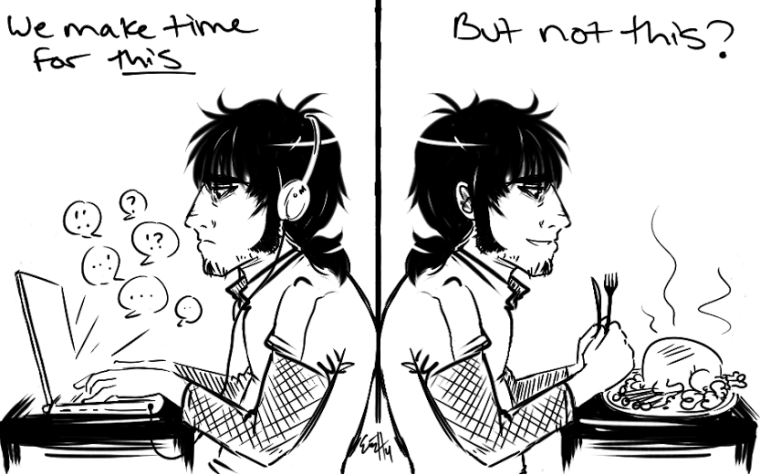Americans spent $254,541,589,000 on fast food during 2013, according to NPD Group. That equates to approximately $800 per person in a nation of 316 million people. And it’s no surprise that McDonald’s ran away with the title of most-successful fast-food chain, selling more than $35 billion worth of Big Macs and fries. At this point, fast food is rooted deep into American society, and the chance at digging it out is long gone, but I want to take some time to truly think about why it continues to be successful by comparing some cultural differences.
The most blatantly obvious connection is embedded in the name “fast food.” At the simplest level, fast food is food served to customers quickly and conveniently. But why are we always in such a hurry to eat?
We make time for work, friends, family and maybe exercise, so why does food and dining fall so low on our list of priorities? We all have things going on in our lives, but some understand that food deserves its share of time. The rest of us make excuses that we are busier than that person, but in all honestly, that is usually not the case. We’ve already shortened the time and convenience from farm to table with our one-stop-shop supermarkets, while European consumers have to make several stops for the same list of groceries, so why not take advantage of it? The “not enough time” excuse is something we tell ourselves so we can put the responsibility of food in someone else’s hands. Track how much time a day you spend on Twitter, Instagram, Reddit, Facebook, Buzzfeed or other social media hubs, and try and still tell me you don’t have enough time.
Some argue that Americans work more than the average European citizen, but that depends on the country, just like that depends on the state. According to the Organization for Economic Co-Operation and Development, the average American works 1,790 hours per year. Meanwhile, the average number of hours for Austria, Czech Republic, France, Italy, Spain, United Kingdom and Poland are respectively 1,699, 1,800, 1,479, 1,752, 1,686, 1,654 and 1,929 hours. There is clearly some difference, but I want to get away from the numbers and think about the marginal benefit from those extra hours of work in a year.
The economic law of diminishing returns states that there is a decrease in marginal output as the amount of input is increased. In other words, there will be a larger difference in output between working 200 hours and 500 hours than between working 1,400 and 1,700 hours. Don’t think about the big picture of reducing hours worked by hundreds, but on the day-to-day level of giving yourself the extra hour or 45 minutes if you absolutely need the extra time.
We always seem to think there is a shortage of time, but we need to stop convincing ourselves that’s a reason to pull up to the Bojangles’ drive-thru.
Lastly, we don’t realize what we’re missing out on when we settle for Subway instead of a meal with friends or family sharing stories. Regardless of background, food is a necessity we share with everyone around the world and serves as a way to connect with someone. Food shouldn’t simply solve the physiological desire of hunger, but also create an opportunity for interpersonal experience. Don’t rush through a meal to catch the next episode of American Idol, but enjoy the meal as a social event instead of a required chore. American restaurants demonstrate the dining style more common here, which is to churn customers out like they’re on an assembly line. European restaurants exhibit the leisurely dining experience found across the pond and cherish time around a table filled with food.
Fast food is just another thing that takes away the possibility of having that experience and stunts social growth.
We simply need to cherish food for more than a carnivorous desire and give it the respect it deserves in our lives.











